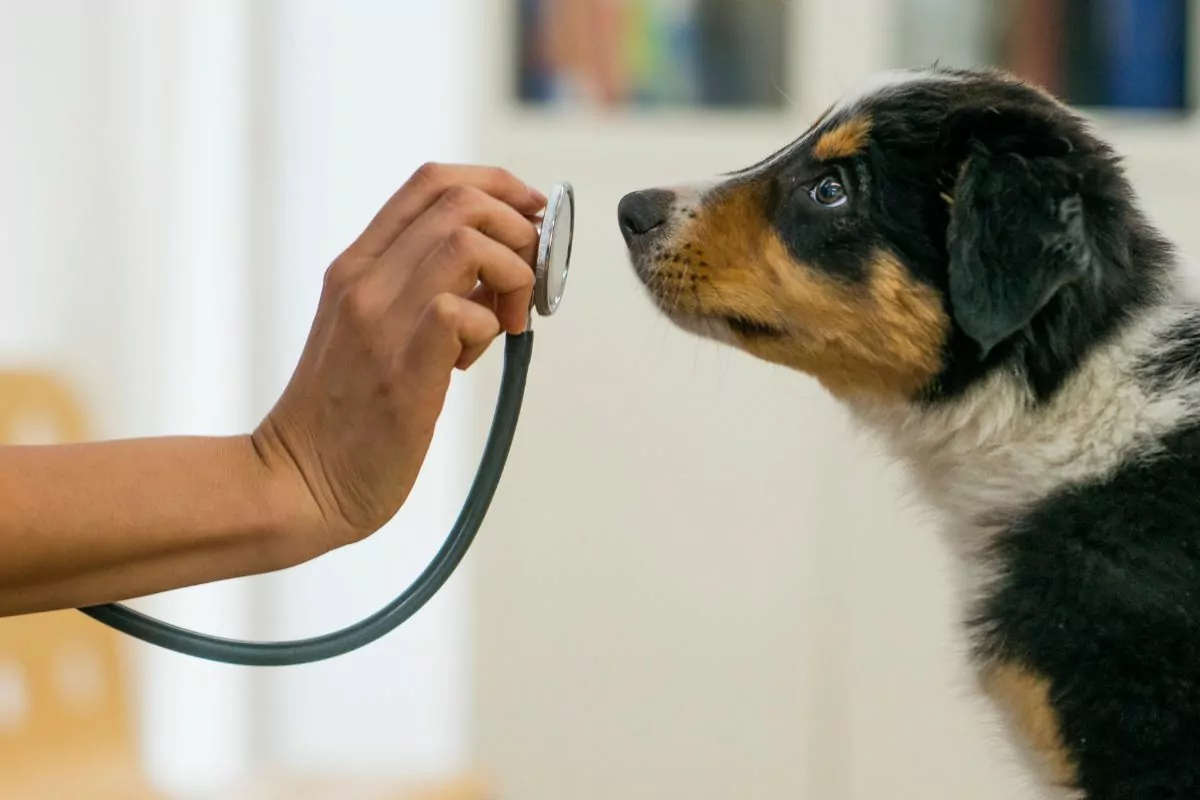Lupus in dogs would be one of the last diseases that would come to mind for a dog. But yes, dogs do get lupus, and among the various conditions that can affect our canine companions, lupus stands out as a perplexing and often misunderstood auto-immune disease.
You might still be shocked and ask yourself, “Really, can dogs have lupus?” Much like its human counterpart, lupus in dogs presents a magnitude of symptoms that can be subtle or severe, making early detection and intervention crucial for effective management.
So what is lupus in dogs, and how do dogs get lupus? Let’s delve deeper into this misunderstood disease, unravel its mysteries, and help pet owners navigate the challenges of recognizing and addressing lupus to ensure the well-being of their cherished furry friends.

What is Lupus in Dogs?
To understand this disease better, let’s answer the question, “What is lupus in dogs?” Lupus erythematosus in dogs is a medical disorder where the cells of the immune system attack other body cells, tissues, and organs. A condition where the body attacks its cells is known as an auto-immune disease. Lupus causes inflammation all over your dog’s body.
How do Dogs Get Lupus?
Dogs get lupus when their immune system forms antibodies against their body; hence, the immune system targets and destroys normal body cells. There is no known cause for lupus. Lupus can arise from a reaction to an infection or a medication used.
For discoid lupus erythematosus, the skin sloughs off because the immune cells attack the cells of a layer of the skin. For systemic erythematosus, the immune cells attack various cells in the body, causing systemic signs.
There is a tendency for canine lupus to run in families and be genetic. However, there is no fixed system of inheritance for the disease. Genetic, physiological, and environmental factors play a role in lupus formation.
Lupus can affect dogs of any age and breed, but it is usually common in young and middle-aged dogs. Unfortunately, lupus is not preventable, and there is no vaccine for it. However, a good lifestyle for your dog makes diagnosing these diseases easier.
Lupus Symptoms in Dogs
Lupus symptoms in dogs vary from dog to dog and depend on the type of lupus your dog has. The presented symptoms depend on the affected organ, and its severity can be acute or chronic.
Since systemic lupus erythematosus affects the entire body in dogs, signs and symptoms are more general, while discoid lupus erythematosus generally affects the skin. Signs and symptoms of lupus include:
- General body weakness/malaise
- Fever
- Loss of appetite and weight loss
- Anemia
- Joint swelling and pain
- Stiffness in the muscles
- Lameness
- Ulcers around the genitals or the mouth
- Loss of hair, crusts on the skin, skin color change, and other dermatological problems
- Smooth muzzle (the nasal planum will lose its cobblestone appearance)
- Nasal bleeding (epistaxis) if ulcers are within or near a big blood vessel
- Frequent urination, thirst, and other kidney problems
- Lesions on the skin around the ear and the eye, and some might have generalized lesions all over the body
- Seizures, twitching, spasms, and other neurological signs
- Swollen lymph nodes
- Low white blood cell count
- High blood protein
- Other specific organ damage conditions such as muscle wasting (thyroid issues), etc

How Vets Diagnose Canine Lupus
Like all auto-immune diseases, diagnosing is tricky, requires many tests, and is mainly stumbled upon in the hospital during tests for a different disorder or condition.
Your veterinarian will take the history of the disease, perform a physical examination, and run various tests to rule out more common illnesses. They might also take fluid from inflamed parts to run biopsies. A skin, or punch biopsy, is done for discoid lupus (DLE). The biopsy removes a small amount of skin, and a pathologist analyzes the sample.
Suppose your vet would also run a marker for auto-immune disease to confirm the suspicion. In summary, diagnosing depends on ruling out common diseases, a positive result from the immune assays, and a history of at least organ involvement.
Lupus in Dogs (Treatment)
There are two types of canine lupus:
Discoid Lupus
It is also known as cutaneous lupus in dogs, DLE, and cutaneous lupus erythematosus. These conditions affect the skin. Exfoliative and vesicular cutaneous lupus erythematosus are other uncommon auto-immune disorders affecting the skin.
DLE lupus is the most common type in dogs. It causes scabs, crusts, and pigmentation loss at the affected part of the skin, usually starting from the nose. DLE is the common skin lupus in dogs. Ultraviolet (UV) radiation/light can sometimes trigger this condition and is more common in sunny climates.
Systemic Lupus
The second type is systemic lupus or systemic lupus erythematosus in dogs. This affects your dog’s entire body since it is systemic (affecting multiple organs and tissues).
SLE in dogs is rare but is more fatal than DLE. It usually affects the nervous system, heart, kidneys, joints, lungs, skin, and blood, giving rise to many symptoms.
Treatment for lupus in dogs starts with your vet treating the major signs being presented (pain and inflammation, anemia, kidney failure, etc). After treating the symptoms, your vet will plan with you what treatment pattern to help relieve your dog of the immune system’s inflammation, pain, and auto-immune activity.
Your veterinarian would prescribe some anti-inflammatory drugs, such as corticosteroids, and immunosuppressive medications, such as cyclophosphamide, cyclosporine, or azathioprine. Your vet will also suggest some lifestyle and dietary changes for your dog to ensure maximum relief. Also, your vet will prescribe additional medication if the side effects of the drugs mentioned above affect your pet.
The treatment plan starts with a high dose of corticosteroids, and the dose will be adjusted when the conditions improve. During your dog’s life, the veterinarian will change the dose depending on how severe or minimal the condition has become.
Often, dogs with DLE have secondary bacterial infections. Hence, the veterinarian would prescribe antibiotics for your pet. Also, topical ointments sometimes work and might be recommended for your dog.
You should ensure that your dog does not lick the medication for 10-15 minutes for effective application. You can distract your dog with a walk, a treat, or a muzzle so they don’t lick it.
Dog Breeds Predisposed to Canine Lupus
Some dog breeds are, however, predisposed to canine lupus. This does not mean all dogs of those breeds would come down with canine lupus. It would help to monitor your dogs occasionally when you have these breeds.
- Poodles
- German Shepherds
- Irish Setters
- Beagles
- Afghan Hounds
- Collies
- Shetland Sheepdogs
Is There a Cure for Lupus in Dogs?
Unfortunately, there isn’t any known cure for canine lupus. After your veterinarian has diagnosed your dog with lupus, it will live with it for the rest of its life. However, some medications would reduce inflammation, reducing signs and symptoms and giving your dog a comfortable life.
The Cost of Canine Lupus
Like all genetic diseases, lupus can be expensive to diagnose and manage. Adding up all the lab tests, the medication, and the fact that it is lifelong, owners make a significant financial decision when their pets are diagnosed with lupus.
However, there are various pet insurance policies and payment plans available. Your veterinarian should be able to assist you if necessary.
Managing Lupus in Dogs
Since this is a lifelong disease, it requires lifelong management. This includes regular veterinary visits, purchasing of medications, complications that will arise, and flares from the symptoms.
Since all drugs have side effects, you would need to constantly monitor your dog and take lab tests regularly to determine the severity of these side effects on the liver, blood cells, and kidney. You would also need to change your dog’s diet and exercise regime, as exposure to direct sunlight can worsen or start up lupus symptoms.

Is Lupus in Dogs Contagious?
Lupus is not contagious to humans or other animals. Your dog can bond with you or any animal when diagnosed.
Lupus in Dogs – Life Expectancy
The prognosis for lupus depends on the severity of the symptoms, the organs affected, and how your dog reacts to the medication.
The life expectancy for lupus in dogs varies. If any vital organs are affected by lupus, it reduces the life expectancy drastically. Also, even though your dog is taking immunosuppressive drugs to prevent the body cells from attacking each other, your dog’s immune system is vulnerable to other diseases due to a suppressed immune system.
DLE can develop into skin cancer, known as squamous cell carcinoma. Hence, regular checkups are needed.
We’ve Got You Covered
Lupus is a rare disease in dogs and can be fatal depending on which organ is affected. Since its signs and symptoms vary, it isn’t easy to diagnose.
Being a lifelong disease, you would need a lot of patience and love for your dog. When diagnosed, your dog can be happy and comfortable, and you and your veterinarian can manage its condition.
